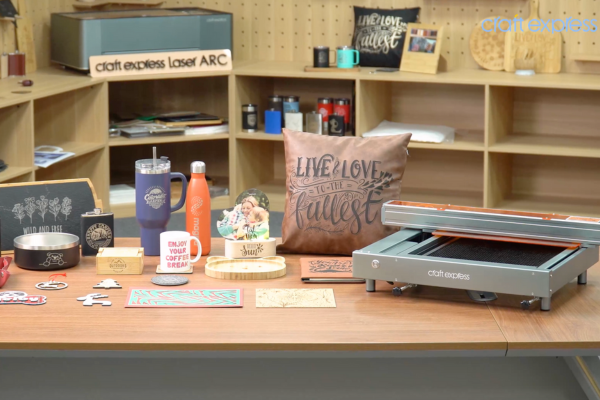
Brand Storytelling: How to Use Your Personal Journey to Connect with Customers
Successful craft businesses do more than just sell products—they build emotional connections with their customers. Storytelling is one of the most effective ways to create a brand identity that attracts loyal buyers. By sharing the journey behind a business, craft entrepreneurs can stand out in a competitive market, increase engagement, and turn casual shoppers into repeat customers.
This guide explains why storytelling matters, how to craft a compelling brand story, and where to share it for maximum impact.
Why Brand Storytelling Matters
Customers today are drawn to brands that feel personal and authentic. Storytelling creates an emotional connection, giving buyers a reason to choose a handmade product over a mass-produced alternative.
The Impact of Storytelling in Branding:
-
Builds trust by showing the real person behind the business.
-
Increases engagement on social media as customers relate to the journey.
-
Boosts sales because people are more likely to buy from brands they feel connected to.
Large companies use storytelling in their marketing all the time, but small business owners have a unique advantage—their stories are real, personal, and relatable.
Step 1: Crafting a Unique Brand Story
A brand story doesn’t have to be dramatic or complicated. It just needs to be authentic and relatable to potential customers.
Three Key Elements of a Strong Brand Story:
1. The Beginning: What Inspired You to Start?
-
Was crafting a hobby that turned into a business?
-
Did a life event push you toward entrepreneurship?
-
Was there a person or moment that sparked the idea?
Example:
"I started my business in 2020 after losing my corporate job. I picked up sublimation as a creative outlet, and before I knew it, friends were asking me to make custom tumblers for them. That’s when I realized—this could be more than just a hobby."
2. The Journey: Challenges and Growth
-
What struggles did you face when starting out?
-
How did you overcome them?
-
What valuable lessons have you learned?
Example:
"At first, I had no idea how to price my products, and I was constantly undercharging. But after learning the value of my time and materials, I built a sustainable business that allows me to do what I love full-time."
3. The Present: Your Mission and Passion
-
What does your business stand for?
-
What makes your products special?
-
How do you want your customers to feel when they receive your work?
Example:
"Today, my mission is to create personalized gifts that bring joy to others. Every tumbler, mug, and t-shirt is made with love and attention to detail, because I believe handmade items hold a special kind of magic."
Step 2: Where to Share Your Brand Story
Once a brand story is crafted, the next step is to integrate it into marketing efforts to connect with customers.
1. Etsy Shop and Website
-
About Section – A short, compelling brand story helps customers feel connected before making a purchase.
-
Product Descriptions – Weaving storytelling into product descriptions adds a personal touch.
-
Example: “This design was inspired by my love for coffee and cozy mornings with my grandmother.”
-
Behind-the-Scenes Content – Showing images of the workspace, materials, or work in progress helps build trust.
2. Social Media (Instagram & TikTok)
Social media platforms are ideal for brand storytelling. Sharing personal experiences makes content more engaging and helps potential customers feel a connection.
Video Ideas:
-
"How I Started My Craft Business" – A quick video explaining the journey.
-
"Day in My Life as a Small Business Owner" – Behind-the-scenes clips of making, packing, and shipping orders.
-
"The First Product I Ever Made vs. Now" – A transformation video showing improvement over time.
Caption Ideas:
-
“Three years ago, I had no idea this hobby would turn into a business. But now, I get to wake up every day and create something meaningful. Thank you for supporting my journey.”
-
“Ever wonder how I started my business? Here’s my story…”
The more authentic the content, the more engagement it will generate. People enjoy learning about the person behind the brand.
3. Email Marketing and Packaging
Adding a personal touch to emails and packaging reinforces a brand story with customers.
Ways to Incorporate Storytelling in Customer Experience:
-
Thank-You Notes – A handwritten or printed message inside each order creates a memorable experience.
-
Example: "Thank you for supporting my small business. Every order you place helps me continue doing what I love—creating personalized gifts that bring joy. I started this business with just a heat press and a dream, and thanks to customers like you, I get to make that dream a reality."
-
Welcome Emails – The first email sent to new customers can include a brief introduction to the brand’s story and mission.
A strong emotional connection increases the likelihood of repeat purchases and word-of-mouth referrals.
Final Steps to Strengthen Brand Storytelling
-
Refine the Brand Story – Make sure it is clear, relatable, and genuine.
-
Update Online Presence – Integrate the story across an Etsy shop, website, and social media pages.
-
Create Engaging Content – Use videos, captions, and images to share the journey with customers.
-
Add Personal Touches – Reinforce storytelling in email marketing and product packaging.
A well-crafted brand story sets a handmade business apart from competitors and builds lasting relationships with customers.




Leave a comment
This site is protected by hCaptcha and the hCaptcha Privacy Policy and Terms of Service apply.